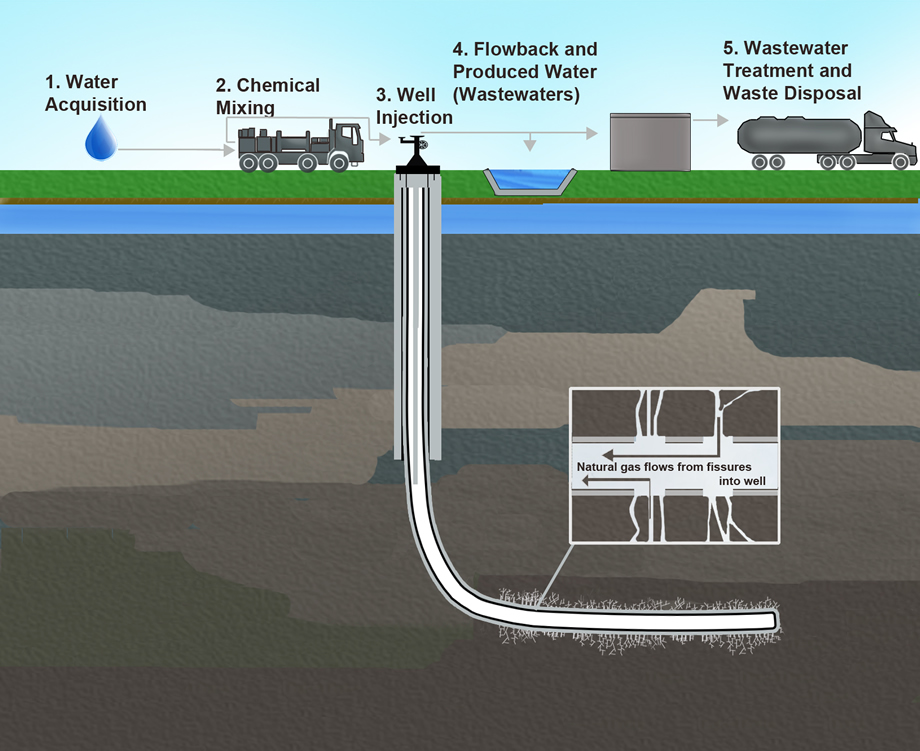Hydraulic fracturing is a technique developed to stimulate oil production from wells in declining oil reservoirs. More recently, fracking has been used to extract oil and natural gas from reservoirs in places where it was previously inaccessible. Once a well is drilled, large volumes of water, sand, and various chemicals are injected to fracture the rock formation holding the target oil or gas. These injections hold the fractures open, which allow the gas and oil to flow into a production well. The most common chemical components include: methanol, isoproponal, crystalline silica, ethylene glycol monobutyl ether, ethylene glycol, hydrotreated light petroleum distillates, and sodium hydroxide.

By US Environmental Protection Agency – http://www2.epa.gov/hfstudy/hydraulic-fracturing-water-cycle, Public Domain, Link
These injections, along with horizontal drilling, allows for the production of methane gas from coal beds, tight gas sands, and shale formations. Shale is the source-rock for many natural gas resources. Gas can migrate from these shale formations into sandstone, in which it becomes trapped by an overlying formation referred to as a seal. Associated gas accumulates in this formation with oil, while non-associated gas does not. Since the gas’s ability to migrate to the surface is limited by the low permeability of sandstone, wells must be drilled through the surface. One well may be fractured multiple times, using around 500,000 to upwards of 6 million gallons of water with various compounds added to the water.
There are six different classes of wells. Click below to learn more.
Six Different Classes of Wells
This rapid growth in hydraulic fracturing and use of directional drilling to reach previously inaccessible gas resources has allowed the industry to expand gas production and access new areas. One in particular is the Marcellus Shale. A large portion of this formation resides in Tioga County, Pennsylvania. Over the years, people have formed varying opinions on hydraulic fracking and have either forced their opinions or emigrated from the area. Click below for a map of various wells in the county.
Literature Cited
Schultz, A. (2012). Hydraulic Fracturing and Natural Gas Drilling. Nova Science Publishers.
